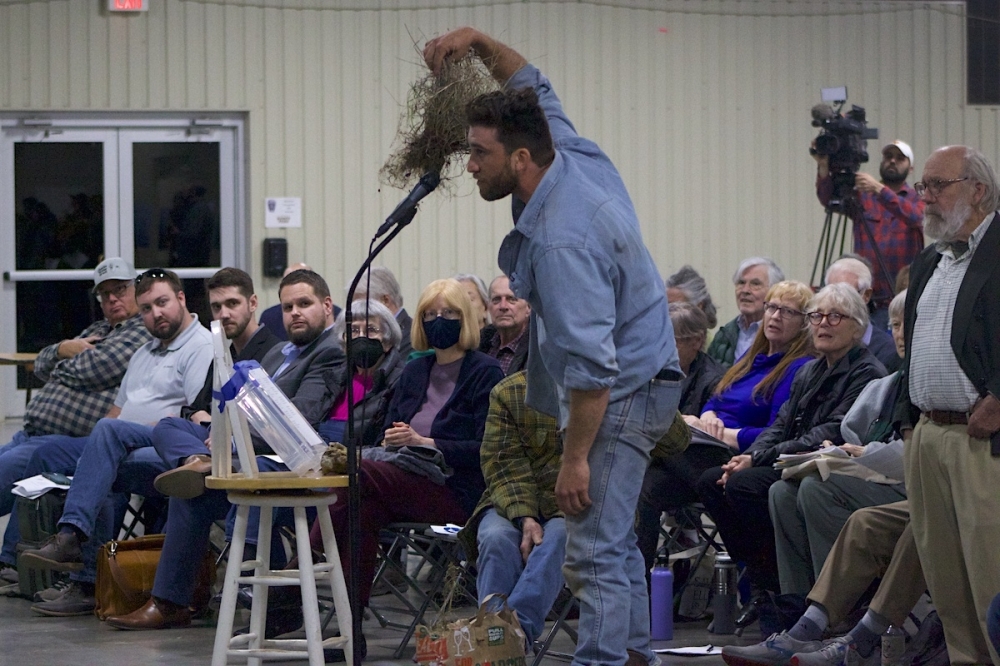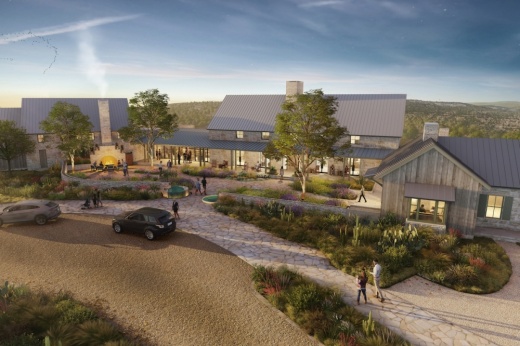The overview
Mirasol Springs is a development by Steve Winn, founder of RealPage and CEO of Mirasol Capital, companies focused on the real estate industry, as previously reported by Community Impact.
The development will consist of:
- 73 rooms in an Auberge Resort Collection Hotel, the company behind the Commodore Perry Estate in Austin
- 30 residences branded under the resort
- 41 single-family lots for custom homes
- 2 restaurants
- Event and visitor venues
- The UT Biodiversity Field Station
- A 1,000-acre conservation easement
The project was announced in April 2021 and is envisioned by its developers “to serve as a model for stewardship, eco-sensitive design and development, restoration, and education,” spokesperson Scott Dunaway said.
The other side
However, some Hill Country residents are worried that, instead, the development’s use of water and its wastewater permit as proposed would not uphold said vision.
A public meeting, held Feb. 12, gathered community members from Austin, Bee Cave and Dripping Springs. The meeting was hosted by the Texas Commission on Environmental Quality. Called by Sen. Donna Campbell, it regarded the development’s draft wastewater permit.
Engineers on the project from Murfee Engineering Company answered questions and presented information on the permit. Residents also provided public comment, and most did not speak in favor of the permit as proposed, recommending changes.
“We're all recreational users and are uniquely impacted by a [Texas Land Application permit] that is not being placed correctly and may affect our ability to recreate,” said Tom Smith, nearby resident and member of the Save the Pedernales organization. “The problem with this TLAP is that it's too close to two important creeks.”
Dunaway said that the project has gone above and beyond parameters put in place by pursuing groundwater and Texas Land Application permits—in which wastewater would be disposed of in the ground where the soil and plants would absorb it.
“The area has been surveyed a number of times, including by engineers and geologists, and there are no karst features, outcrops or other recharge features in the proposed TLAP area,” Dunaway said, addressing specific concerns brought up by residents. “This is not a discharge permit; this is not permitted to discharge in any of those waterways.”

Residents such as Mike Clifford from the Greater Edwards Aquifer Alliance said changes can be made to better Mirasol Springs.
“There's two main wastewater issues: one is [the developer] wants to run raw sewage across Roy Creek Canyon and across Roy Creek, which is a very pristine, protected environment,” Clifford said. “The second problem is that they have not proposed an expensive enough wastewater treatment plan; they need removal of phosphorus from wastewater.”
Clifford said these issues could be solved by building a wastewater treatment plant on the far end of Roy Creek Canyon, rather than running raw sewage to a different treatment plant on the property and planning to remove phosphorus when treating wastewater.
Diving in deeper
However, Clifford also believes that water usage may potentially prove to be a long-term issue due to the nature of the area.
“The problem with the Pedernales river is that it’s already very low. It's running about a third of what it should be right now, and in the summer it dries up completely,” Clifford said. “[It’s] also one of the main rivers that flows into Lake Travis, where the city of Austin gets its water, so this is why people in Austin should be concerned about this development.”
Dunaway told Community Impact the development will obtain 100% of its water demand from the Lower Colorado River Authority, and surface water will be the development’s primary source of water. Groundwater “will serve as a secondary source,” and based on data for the flow of water in the Pedernales River, groundwater is expected to be used 20%-25% of the time, he said.
In addition, private wells and septic tanks will be prohibited on the property, including for the 41 custom home sites, Dunaway said.
Also of note
Dissent from residents comes amid another proposed development awaiting permit approvals. A concert venue slated for Fitzhugh Road has been part of an ongoing conversation from residents, including Clifford, who are against it in its entirety for multiple environmental concerns the venue raises.
Mirasol Springs will impact Bee Cave and Austin, but Dripping Springs, in particular, is rapidly growing, and with that growth has introduced potential infrastructural changes, such as the expansion of Hwy. 290 that has left some residents weary.
What’s next?
The TCEQ will respond to all formal comments made at the Feb. 12 meeting. Once posted, likely by this summer, the agency will also explain its decision on the permit and if any residents will be granted a contested case hearing.
Construction is expected to begin in summer 2025, with an anticipated opening in 2027, including the field station. Total completion of Mirasol Springs is anticipated for 2032.
“Every aspect of planning for Mirasol Springs is driven by a vision for conservation, restoration and education,” Dunaway said. “To our knowledge, no developer in this region has taken a similar proactive approach to environmental considerations and conservation.”
For more information on Mirasol Springs, visit www.mirasolsprings.com. For more information on the wastewater permit submitted by the developer, visit www.tceq.texas.gov.





